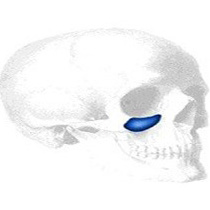The tear trough facial deformity is a frequently misunderstood cosmetic problem. The use of the term ‘tear’ trough’ implies that it lies close to the eye but it is easy to confuse it with other lower eye and cheek issues. Because the cheek and eyelid areas are right next to each and the shape of one area affects what lies around it, accurately defining the tear trough deformity will allow the right treatment method to be chosen to help reduce its prominence.
Tear troughs are sunken in or a hollowed out area below the eye. The hollowness is in the area between the rim of eye socket bone and the side of the nose. One can envision how it got this name as tears would roll down this ‘facial gutter’ from the inside of the eye. The correct anatomic term for the tear trough is the nasojugal fold. a normal anatomic indentation that is present to some degree in most people. But if it becomes aesthetically too deep, usually with aging, it is referred to as a tear trough depression. Such a depression near the eye contributes to a visible sign of aging.
Hollowness below the eyelid (put your finger in the area, if you feel bone then you are on the lower rim of the eye socket) is most typically caused by sagging of the cheek tissues, known as midface descent, or inadequate development of the bone of the upper cheek, known as midface hypoplasia. The patient’s age is usually a key element in determining the cause of this ‘bone’ problem. A younger patient most likely has cheek/orbital rim bone underdevelopment, an older patient more likely has midface descent. Some older patients, however, may have both.

It is easy to see how many confuse tear troughs, cheek/orbital rim hypoplasia, and decreased orbital volume. All affect the eye area but the treatments for each are quite different. Fundamentally treatment option for the tear trough includes injectable fillers, fat injections or tear trough implants.
Dr. Barry Eppley
Indianapolis, Indiana


